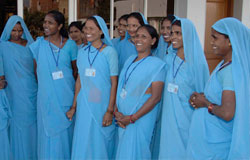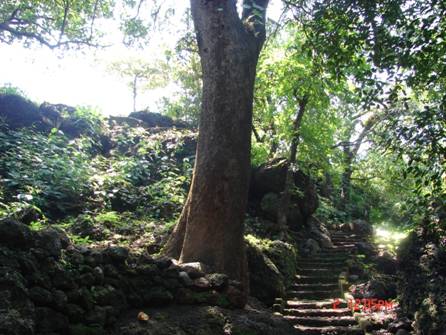/sub-categories/success-stories-and-case-studies
Success Stories and Case Studies
Solid waste management initiatives in small towns - Lessons and implications - A WSP report
Posted on 10 Jun, 2011 05:12 PM These efforts were developed and launched through urban local bodies and which transformed service levels and helped improve compliance with the Municipal Solid Waste Rules, in a context where the state of MSW services in most of the Indian towns has been far from sati
Interlinking of water harvesting structures through link water channels - A viable alternative at micro-level by Ambuja Cement Foundation
Posted on 25 May, 2011 07:39 PM The coastal areas of Gujarat especially the villages lying within 20-25 km from the seashore are suffering from the problem of salinity ingress. Most of the rivulets that drain this region like Goma and Somat are seasonal at best and their water does not last beyond monsoons. The other aquifers like ponds, which get water from these rivers, also dry up as early as October.
The coastal areas of Gujarat especially the villages lying within 20-25 km from the seashore are suffering from the problem of salinity ingress. Most of the rivulets that drain this region like Goma and Somat are seasonal at best and their water does not last beyond monsoons. The other aquifers like ponds, which get water from these rivers, also dry up as early as October.
Now it is water all the way in Garhkundar–Dabar watershed of drought-prone semi-arid Bundelkhand – A paper in Current Science
Posted on 19 May, 2011 08:07 AMThe area suffers from water scarcity, natural resource degradation, low crop productivity (1–1.5 t/ha), low rainwater use efficiency (35–45 per cent), high erosion, poor soil fertility, frequent droughts, poor irrigation facilities, heavy biotic pressure on forests, inadequate vegetation cover and frequent crop failure resulting in scarcity of food, fodder and fuel. The region has serious limitations of ground and surface-water availability and heavily depends upon perched water for drinking as well as irrigation.
Case studies on rainwater harvesting and artificial recharge – A compilation by Central Ground Water Board
Posted on 17 May, 2011 09:13 PM Groundwater caters to the demand of ever growing domestic, agricultural and industrial sector of the country and is being indiscriminately exploited by several users. On the other hand, rapid urbanization and land use changes has resulted in reduced natural infiltration or recharge of aquifers.
Groundwater caters to the demand of ever growing domestic, agricultural and industrial sector of the country and is being indiscriminately exploited by several users. On the other hand, rapid urbanization and land use changes has resulted in reduced natural infiltration or recharge of aquifers.
This has led to various problems related to quantity and quality and issues like the decline in water levels, depletion of groundwater resource and quality deterioration. There is thus an imperative need for augmenting the valuable groundwater resource. Artificial recharge and roof top rainwater harvesting is one such method that can revive this precious resource. Several traditional and scientifically proven artificial recharge and rainwater harvesting techniques have been adopted in different parts of the country. These structures have proven to be viable option for augmenting the groundwater aquifers by making use of surplus surface runoff.
Gender-sensitive sustainable sanitation - Women s groups in Chhattisgarh take initiative to bring toilets into their households and sustainable sanitation into their communities - ADB case study
Posted on 09 May, 2011 03:06 PM

Sanitation in Women’s Hands
Women in the villages of Chhattisgarh, India have banded together to bring some decent sanitation facilities in their homes—something which has been missing in their lives for a very long time.
Sustainable water management initiatives in Konkan under threat - A report
Posted on 21 Jan, 2011 02:09 PMGuest Post by: Parineeta Dandekar
At the first sight, Daarche Paani (‘water at the doors’) appears unreal.. on a small flat plateau called ‘Sadaa’ in konkan, an elegant cobbled walkway leads a puzzled visitor to stairs carved in stone, which go down to an ancient grove, and here is an intricate system of tanks, channels and falls which supplies water to the Panderi village and goes down as a free flowing stream, to irrigate a plantation of arecanut, pepper and mangoes in a village called Gudaghe. When I visited the place, I could see three eminent visitors, a silent lady washing her load of clothes, a fairy bluebird splashing at a tank and a huge moonmoth in one of the trees.
 Stone walkway and ancient mango trees leading to Daarche Paani.
Stone walkway and ancient mango trees leading to Daarche Paani.
Photo: Parineeta Dandekar
India s groundwater challenges and the way forward
Posted on 18 Jan, 2011 11:42 PMIndia’s Groundwater Challenge and the Way Forward
P S Vijay Shankar , Himanshu Kulkarni , Sunderrajan Krishnan
The groundwater crisis is acquiring alarming proportions in many parts of the country. Strategies to respond to groundwater overuse and deteriorating water quality must be based on a new approach involving typologising the resource problems and redefining the institutional structure governing groundwater. This approach is based on the notion of groundwater as common property.
SRI - Less seeds, water , fertilisers lead to greater yields
Posted on 18 Jan, 2011 11:21 PMBHUBANESWAR, India, Dec 29, 2010 (IPS) - When French Jesuit priest and passionate agriculturist Henri de Laulanie developed the System of Rice Intensification (SRI) method of cultivation for Madagascar’s poor farmers in the 1980s, he probably had no idea that millions of farmers elsewhere in the world would one day benefit from it as well.
Potential of the System of Rice Intensification for systemic improvement in rice production and water use - The case of Andhra Pradesh
Posted on 13 Jan, 2011 03:54 PMThis paper discusses the advantages of system of rice intensification over normal paddy cultivation. The researcher compare the performance of System of Rice Intensification (SRI) and normal rice fields in two mandals (subdistricts) of Mahabubnagar district of Andhra Pradesh. The yields from these two systems and agronomics are compared.
The need to find less water intensive methods of agriculture become important as there is a reduction in the scope of enhancing irrigation base for increase in food production. It is in this context that this research has been carried out.
